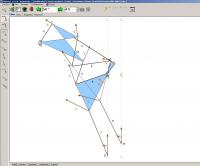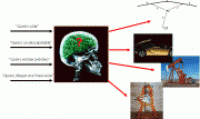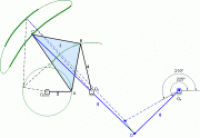Mechanisms
# | Custom orthosis or exoskeleton design for the rehabilitation of the fingers of the hand with continuous passive movement The objective is to help the rehabilitation of the fingers of the hand, except for the thumb, after a fracture or reconstruction of the flexor tendons, injuries for which early rehabilitation with passive movement (CPM) is recommended since it prevents the formation of edema or adhesions of internal scars. Currently, these exercises are usually performed by a professional once the splint that immobilizes the finger has been removed, which prevents early rehabilitation. The designed device performs the function of an immobilizing finger splint and at the same time applies a passive movement, according to the instructions of the rehabilitator. |
 | Mechanism simulation program Educational and research software for single degree of freedom planar mechanisms by experts in kinematic and dynamic mechanisms. This software uses classic MMT knowledge for its analysis module. However, the dimensional synthesis module incorporates a new technique based on Genetic Algorithms. This program returns to the user the result of the unknown variables for the kinematic and dynamic analysis. |
 | Type synthesis Solve the problem from its most basic state: once the needs and restrictions of a problem are known, what will be the most appropriate type of mechanism? And what kind of elements will I use? Therefore, it deals with the selection of the most suitable type of mechanism to perform a certain function, such as: flying, making a convertible car, extracting oil or drawing a straight line. It also deals with the various methods we can use to develop powertrains and mechanisms. |
| Dimensional Synthesis It addresses the problem of obtaining the characteristic dimensions of an already pre-established mechanism, which must be able to meet given requirements. These requirements are usually either correspondences between the angular positions of the input and output links of the mechanism, giving rise to the synthesis called generation of functions, or that some of the points of the mechanism describe a given trajectory, then called function generation. trajectories. The method used to find the dimensions of the mechanism is framed within those based on optimization techniques through the evolution of species and natural selection. This methodology is described below. |
Other fields of research
> Robotics | > Vehicles > Thesis |




